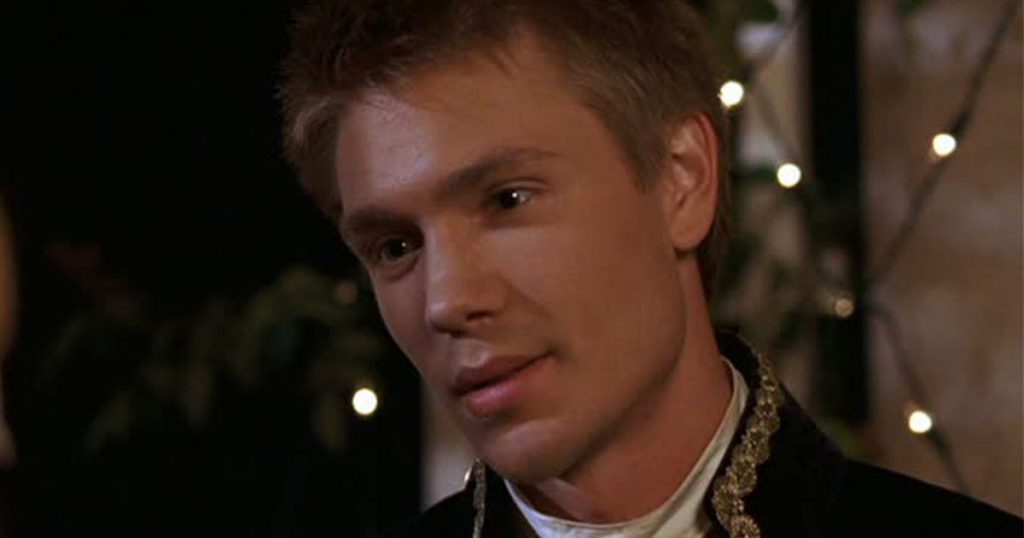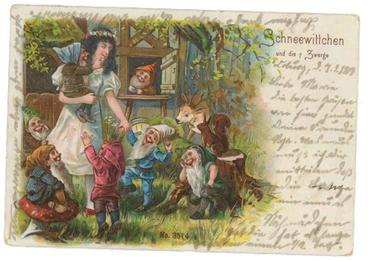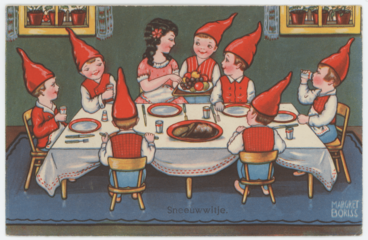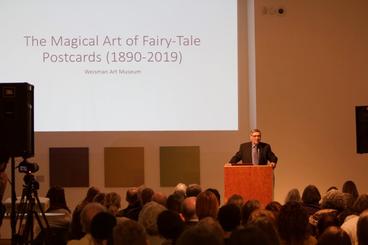Overwhelmed with the course work that you were given by your professors to “look at” or “work on” during spring “break,” you may be asking yourself: how can I continue to procrastinate this until Sunday night? Why not watch movies (fun) and visit an art museum (educational and fun)? The Weisman Art Museum is currently showing The Wonderful World Before Disney, an exhibition inspired by the collection of fairy-tale themed postcards from Jack Zipes, professor emeritus of German and comparative literature at the University of Minnesota. The show features postcards spanning from the 1890s to the 1930s that focus on stories like Cinderella, Sleeping Beauty, Snow White, and Red Riding Hood.
Needless to say, the exhibition made me want to watch every fairytale-themed movie that I could find on available, legal, streaming services, and since Disney keeps an iron grip on most of its titles, I came across some modern fairy tale movies from the 2000s that I had not seen in a good while. With Disney’s constant pursuit to always occupy movie theaters by monopolizing franchises and remaking their own movies, it’s easy to forget some quality fairytale-esque films that were created during the golden age of low-rise flared jeans and tube tops. To get in the spirit of pre-Disney postcard imagery, make sure you (re)view these non-Disney 2000s fairy tale classics.
Ella Enchanted (2001)
It’s Cinderella with a twist—Ella of Frell is given the “gift of obedience” by Lucinda the Fairy and must do whatever she is told, which makes for a trying tale as she falls for the prince. The film features unforgettable moments of Anne Hathaway singing favorites like “Somebody to Love” and “Don’t Go Breaking My Heart.” While the film is super kitchy in its humor and has obviously poor CGI, but Ella Enchanted is a feel-good film that will remind you why you adore Anne Hathaway. Plus the prince is pretty cute, so there’s that.
Sydney White (2007)
Who could forget this Amanda Bynes classic? She plays the titular character who begins her journey by leaving her home to head off to college. While feeling pressure to rush for her mom’s sorority as a legacy, she makes an enemy with the head of the sorority and major Queen Bee. Sydney leaves the sorority and ends up living with seven dorky guys who are about to lose their house to make room for a Greek life center. It’s like the House Bunny with nerdy guys, but with no fab glow up. Though the movie’s humor is rough, Amanda Bynes’s charm with have you rooting for her and her nerds.
A Cinderella Story (2004)
CHAD MICHAEL MURRAY.
Another Cinderella Story (2008)
Otherwise known as Selena Gomez’s Cinderella movie that does not feature Chad Michael Murray. Apparently, this film is a sequel to A Cinderella Story (yet the two are in no way connected besides sharing a similar title). In this version, Selena’s character dances with a famous pop star classmate who serves as the movie’s prince charming. It’s just like any other Cinderella retelling, except with a lot of dancing. Though not exactly a standout film (possibly due to the lack of Chad Michael Murray), it’s charm rests with its quintessential 2008 throwbacks like fedoras and a knockoff iPod, which serves as the glass slipper for the film.
So what persists in these renditions of fairy tale stories?
The Wonderful World Before Disney showcases how fairytales were rendered on print between the 1890s to the 1930s, long before these 2000s classics. The exhibition focuses on major themes that were apparent in the fairy tales, including the rivalry between stepmothers and daughters and the idea of the prince saving the day. While folklore is rooted in oral tradition for the purpose of entertainment, these 2000s movies still retain subliminal themes identified in the exhibition.
Like their original tales, all of the films feature women as self-obsessed villains who contribute to the conflict of each film. The conflict between the heroine and her villainous counterpart amplifies with the introduction of the “prince,” as the stepsisters/sorority queens challenge the heroine in an attempt to vie for the attention of the attractive guy. These tropes feed off the idea that women must fight other women for the attention of men. Yet, I think we’re getting somewhere as these movies often portray the heroine as kind, relatable, and independent, more so than the original stories did.
Once you’ve rewatched these reimagined 2000s movies, see how they compare to Zipes' collection of pre-Disney postcards before you get busy with the lead up to finals. Stop by and view the exhibit before it turns into a pumpkin on July 7.




